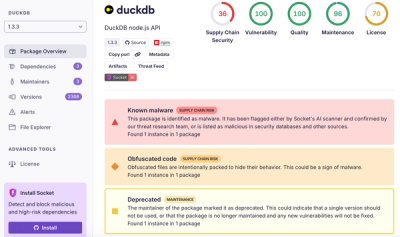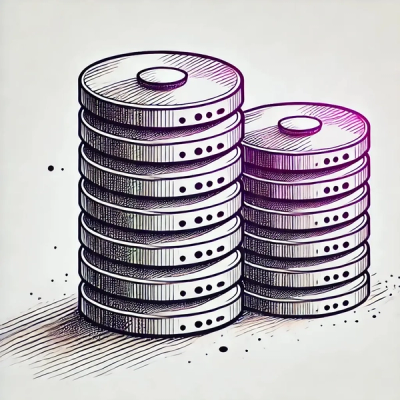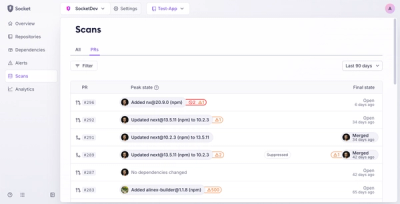
Research
/Security News
DuckDB npm Account Compromised in Continuing Supply Chain Attack
Ongoing npm supply chain attack spreads to DuckDB: multiple packages compromised with the same wallet-drainer malware.
@dangreaves/react-tracker
Advanced tools
React hooks for sending events to RudderStack and Segment
React hook for sending events to RudderStack and Segment
This package exports a React hook which makes loading and sending events to the RudderStack, Segment or other Segment-compatible JavaScript tracking SDKs easier.
It also exports a TrackerHelper component which renders a floating debug window, similar to the Shopify Pixel Helper, showing an expandable list of tracking events as they are received.
npm install @dangreaves/react-tracker
To send events, you must first load the appropriate JavaScript SDK for your Segment-compatible tracking service using an adapter.
Create a React component which imports your chosen adapter, and pass it to the loadAdapter method from the useTracker hook. Render that React component somewhere globally in your app.
In this example, we are using the RudderStack JavaScript SDK.
import { useTracker, RudderStackAdapter } from "@dangreaves/react-tracker";
function Tracker() {
const tracker = useTracker();
useEffect(() => {
tracker.loadAdapter(
new RudderStackAdapter({
writeKey: "abcdefhijklmnopqrstuvwxyq",
dataPlaneUrl: "https://foobar.dataplane.rudderstack.com",
}),
);
}, [tracker]);
return null;
}
To send an event to the tracker, use the useTracker() hook.
You can send events to the tracker at any time, even before the adapters have connected. The events will be buffered and sent to the adapters when ready.
import { useTracker } from "@dangreaves/react-tracker";
function Component() {
const tracker = useTracker();
return (
<button onClick={() => tracker.track("Button clicked", { foo: "bar" })}>
Click me
</button>
);
}
The TrackerHelper component shows a floating window to debug events sent to the tracker. It shows the status of each adapter and a list of events. Each event can be expanded to show the full JSON payload which was sent to the SDK.
import { TrackerHelper } from "@dangreaves/react-tracker";
function Component() {
return <TrackerHelper />;
}
When you have rendered the component on the page, you must activate it to show it. You can do this in a few ways.
?enableTrackerHelper to the URL and refresh the pagereact-tracker-helper-enabled local storage key to trueTo close the helper, click the close button, which will set the react-tracker-helper-enabled local storage key to false.
If you would like to manually control the helper visibility, you can use the enabled and onClose props instead.
import { useState } from "react";
import { TrackerHelper } from "@dangreaves/react-tracker";
function Component() {
const [enabled, setEnabled] = useState(false);
return <TrackerHelper enabled={enabled} onClose={() => setEnabled(false)} />;
}
FAQs
React hooks for sending events to RudderStack and Segment
We found that @dangreaves/react-tracker demonstrated a healthy version release cadence and project activity because the last version was released less than a year ago. It has 0 open source maintainers collaborating on the project.
Did you know?

Socket for GitHub automatically highlights issues in each pull request and monitors the health of all your open source dependencies. Discover the contents of your packages and block harmful activity before you install or update your dependencies.

Research
/Security News
Ongoing npm supply chain attack spreads to DuckDB: multiple packages compromised with the same wallet-drainer malware.

Security News
The MCP Steering Committee has launched the official MCP Registry in preview, a central hub for discovering and publishing MCP servers.

Product
Socket’s new Pull Request Stories give security teams clear visibility into dependency risks and outcomes across scanned pull requests.